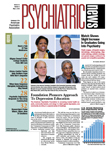Items such as shoe polish, glue, and aerosols are quickly becoming gateway drugs for young adolescents, according to the results of a government survey released in March.
Combined data on inhalant use from the National Survey on Drug Use and Health gathered from 2002 through 2006 revealed that inhalants were the most frequently reported class of illicit drugs used in the prior year among those aged 12 (3.4 percent reported past-year use) and 13 (4.8 percent reported past-year use).
The findings also indicated that an annual average of 593,000 adolescents aged 12 to 17 used inhalants for the first time in the year before their survey interview.
Among 12- and 13-year-olds combined who reported using illicit drugs during the prior year, 45.5 percent acknowledged using inhalants, 36.5 percent abused pain medications, and 28.4 percent used marijuana. Almost 10 percent used other drugs.
The survey is conducted each year by the Substance Abuse and Mental Health Services Administration (SAMHSA). It collects information on the prevalence of substance use in the population, perceptions of risk and availability related to substance use, patterns of use, substance use treatment, and mental illness. It is conducted with more than 65,000 Americans in their homes each year, and the results are extrapolated to population estimates.
Inhalants are more popular than marijuana among 12-year-olds, according to the data, with a higher proportion of 12-year-olds (3.4 percent) reporting using inhalants to get high than those who used marijuana (1.1 percent).
“While data show that often children move away from using inhalants as they grow older, they often move on to other illicit drugs. Inhalants are a health hazard that can damage the brain, heart, liver, or kidneys” and can lead to death, said H. Westley Clark, M.D., director of the Center for Substance Abuse Treatment, a division of SAMHSA, in a statement following release of the findings.
“One of the reasons inhalants present such a difficult challenge is their ready availability to children and adolescents, who are unaware that a single huffing session can kill them,” said National Institute on Drug Abuse Director Nora Volkow, M.D., in a press statement.
As adolescents grow older, their choice of inhalants changes, according to information from the survey. Glue and shoe polish or other toluene-based products tend to be more commonly used among 12- and 13-year-olds, while nitrous oxide is the most commonly used inhalant among 17-year-olds.
The National Survey on Drug Use and Health report “Inhalant Use Across the Adolescent Years” is posted at<www.oas.samhsa.gov/2k8/inhalants/inhalants.cfm>.▪
